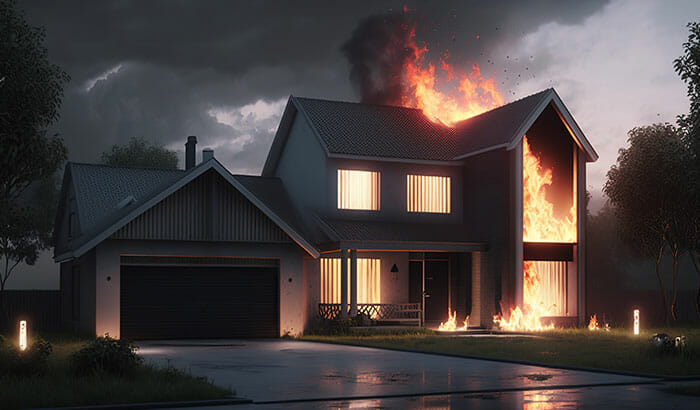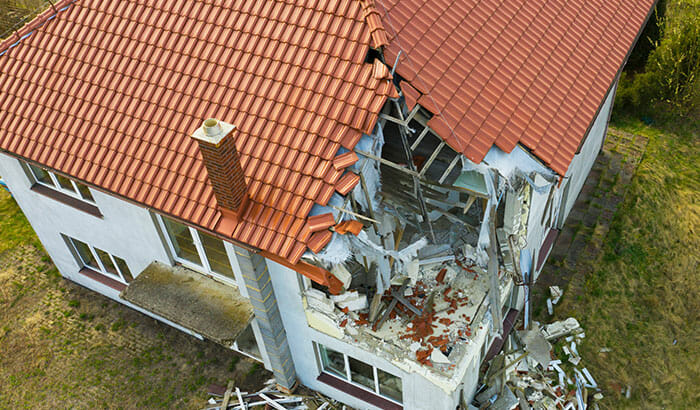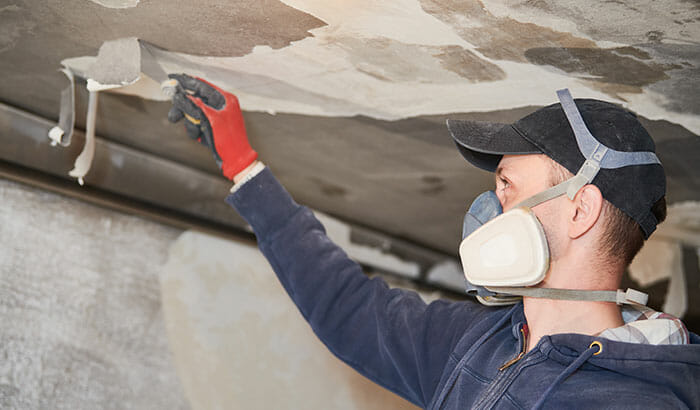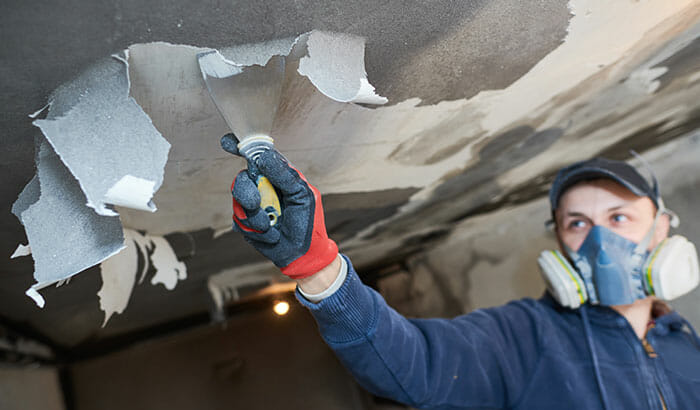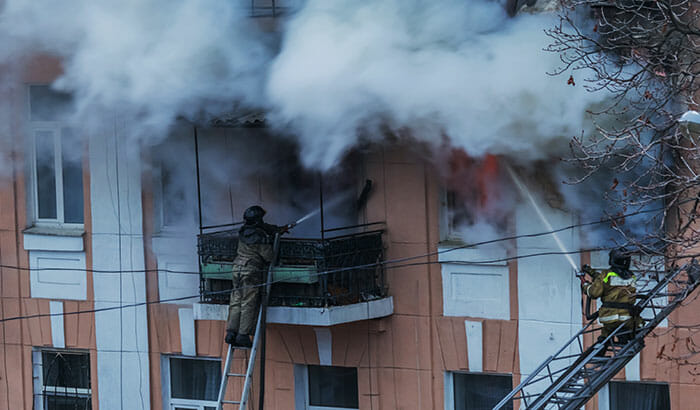Smoke damage can be one of the most devastating consequences of a fire in your home. Not only can it leave behind a persistent smell, but it can also cause discoloration, staining, and other forms of damage to your property. Even if the fire was small or contained in one area, the effects of smoke damage could be far-reaching and long-lasting.
In this blog, we’ll explore the signs of smoke damage in your home, the associated risks, and what steps you can take to mitigate the damage and get professional smoke damage restoration. Whether you’re dealing with the aftermath of a fire or just want to be prepared for the worst, understanding the impact of smoke damage is essential for protecting your home and your family’s health.
5 Signs of Smoke Damage in Your Home
Discoloration
Smoke damage can leave behind a yellow or brownish stain on walls, ceilings, and other surfaces that is difficult to remove with standard cleaning methods. The discoloration may be more noticeable in areas of your home exposed to the most smoke, but it can also appear in areas not directly affected by the fire. The discoloration caused by smoke damage is often uneven and can appear in patterns or streaks.
Aside from being unsightly, smoke damage can also be a health hazard. The chemicals and particles in smoke can cause respiratory issues and other health problems, particularly for those with pre-existing conditions like asthma or allergies.
Odor
The smell of smoke is one of the most pervasive and persistent consequences of smoke damage in your home. The odor can linger long after a fire, even if you can’t see any visible signs of smoke damage. This can be especially true if the fire was severe or if a lot of smoke was involved. In some cases, the smell of smoke can be so strong that it can make it difficult to live in your home.
It’s important to note that the smell of smoke can also be a health hazard. The particles and chemicals in smoke can irritate your respiratory system and cause breathing difficulties, particularly for those with pre-existing conditions like asthma or allergies. Additionally, the smell of smoke can be a sign of other damage to your home, such as water damage from firefighting efforts or structural damage from the fire itself.
Soot
Soot is another sign of smoke damage in your home. It is a black, powdery substance that can accumulate on surfaces like walls, ceilings, and floors. Soot is composed of tiny particles that are released when materials like wood or plastic burn. These particles can be dangerous if inhaled, as they can cause respiratory issues and other health problems.
Soot can leave behind dark stains or smudges that are difficult to remove. You may notice that the soot is more concentrated in areas of your home exposed to the most smoke, but it can also spread throughout your home and settle on surfaces that were not directly affected by the fire. Soot can also be a sign of other forms of damage to your home, such as water damage from firefighting efforts or structural damage from the fire itself.
Damage to Textiles
Smoke particles can settle into fabrics and leave behind a strong, unpleasant odor that is difficult to remove. Additionally, the heat from the fire can cause materials to discolor or become discolored, even if they were not directly exposed to flames.
When looking for smoke damage to fabrics, you may notice discoloration or staining that is not typical of normal wear and tear. The discoloration may be uneven or appear in patterns, and the fabric may feel stiff or crunchy. In some cases, the damage may not be immediately apparent and may become more noticeable over time. Smoke damage to fabrics can be difficult to remove, and regular cleaning methods may not be effective.
Respiratory Issues
Smoke damage can pose a serious risk to your respiratory health, particularly for those with pre-existing conditions such as asthma or allergies. The particles and chemicals in smoke can irritate the respiratory system, leading to coughing, wheezing, and shortness of breath. Even if you don’t have a pre-existing condition, exposure to smoke can cause temporary respiratory issues that can be uncomfortable and distressing.
If you or your family experience these symptoms after a fire, it may indicate smoke damage in your home. It’s important to seek medical attention if you experience any respiratory issues after a fire. Additionally, having your home evaluated for smoke damage and taking appropriate measures to address any damage found is important. This may involve deep cleaning or deodorizing affected areas and addressing any underlying damage to your home.
How to Prevent Smoke Damage
Preventing smoke damage is always preferable to dealing with the aftermath of a fire. Here are some tips for preventing smoke damage in your home:
- Install smoke detectors: Smoke detectors can alert you to a fire in its early stages, giving you time to evacuate and call for help.
- Practice fire safety: Take steps to prevent fires in your home, such as keeping flammable materials away from heat sources and being careful when cooking.
- Maintain appliances: Ensure that appliances in your home, such as heating systems and dryers, are regularly maintained and functioning correctly to prevent fires.
- Have a fire extinguisher: Keep a fire extinguisher in your home and know how to use it in case of a small fire.
- Have a fire evacuation plan: Make sure everyone in your household knows how to evacuate safely in case of a fire.
By taking these steps, you can help prevent smoke damage in your home and protect your family’s health and safety.
How to Repair Smoke Damage
Repairing smoke damage can be a difficult and complex process. Here are some tips for repairing smoke damage in your home:
- Hire a professional: Smoke damage repair is a job best left to professionals. Look for a reputable and experienced smoke damage restoration company in your area.
- Assess the damage: The first step in repairing smoke damage is to assess the extent of the damage. A professional will evaluate the damage and develop a restoration plan.
- Clean and deodorize: The next step is cleaning and deodorizing affected areas. This may involve deep cleaning of walls, floors, ceilings, and specialized treatments to remove smoke odors.
- Replace damaged materials: In some cases, damaged materials may need to be replaced, such as carpets or drywall. A professional restoration company can determine which materials need to be replaced and provide recommendations.
- Prevent future damage: Finally, take steps to prevent future smoke damage, such as installing smoke detectors and practicing fire safety in your home.
Bull Matrix Restoration
Bull Matrix Restoration is a disaster recovery company equipped with the latest technology and expertise to restore water or smoke damage. Our semi-trailers come pre-loaded with state-of-the-art equipment such as air scrubbers, dehumidifiers, and moisture testing equipment. Our team consists of highly trained IIRC-certified technicians, and we have a vast inventory of equipment to minimize claims costs and salvage items.
We take pride in delivering top-quality home and business mitigation and reconstruction services with unmatched customer service. Our employees are our backbone, and we value their well-being. We build strong, long-lasting relationships with our partners and clients and work closely with insurance companies to ensure customer satisfaction.
Contact us today or call us at 801.758.8988 to see how we can help!

